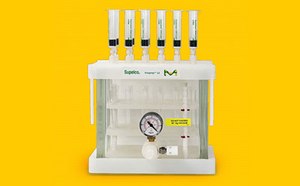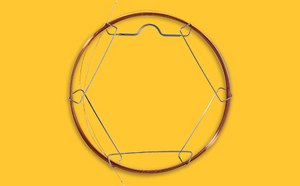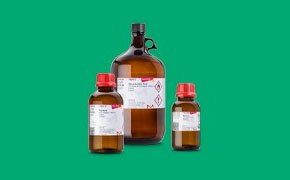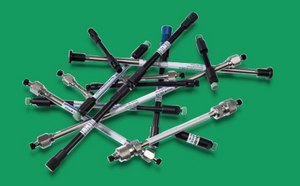QuEChERS Sample Preparation Method
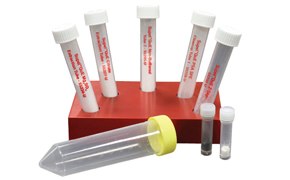
QuEChERS is a type of dispersive solid phase extraction (dSPE) used for sample preparation. QuEChERS stands for ‘Quick, Easy, Cheap, Effective, Rugged and Safe’. Originally developed to prepare fruit and vegetable samples for pesticide residue analysis, this method is now used to analyze other chemical classes, including PAHs (polycyclic aromatic hydrocarbons), PCBs (polychlorinated biphenyls), PBDEs (polybrominated diphenyl ethers), and flame retardants. The concept was introduced in 2002 and is now specified in official methods of the Association of Analytical Communities (AOAC 2007.01) and European Committee for Standardization (EN 15662:2008).
Featured Categories
Discover our range of solid phase extraction products for rapid and accurate analytical sample preparation to ensure effective and reliable chromatographic analysis. They include SPE cartridges, plates, extraction tubes and dispersive SPE tools, and accessories
Achieve superior GC performance with our columns, consumables, and accessories. Explore Supelco® offerings.
Your Solvent Source: Find the right fit with Supelco®, SigmaAldrich®, and SAFC® brands, covering analytical, lab, and biopharmaceutical uses. Order online.
Achieve precise separations with our extensive HPLC column collection. Enhance retention, resolution, and selectivity. Order today.
QuEChERS Sample Extraction
Solvent extraction techniques are designed to achieve maximum analyte yield from the base matrix. Analytes of interest are extracted from the sample matrix using water-miscible solvents (usually acetonitrile) and high concentrations of salt and/or buffering agents. Solvent selection is important to minimize compound co-extraction. Salts are used in the extraction step to create phase separation. They act as buffers to adjust the pH and remove water from the sample.
QuEChERS Cleanup
Sample cleanup reduces interference during subsequent analysis, as interference can damage analytical instrumentation and complicate analyte identification and quantification. Unlike traditional sample cleanup methods using SPE tubes, in QuEChERS, cleanup is facilitated by mixing bulk amounts of SPE sorbents with the sample extract. Sorbents used in clean up remove matrix interferences that coextract with analytes of interest. The use of PSA, C18 or GCB (graphitized carbon black) sorbents remove sugars, lipids, sterols, organic acids, proteins, carotenoids, chlorophyll, and other pigments prior to a GC-MS/MS or LC-MS/MS analysis. Special Z-Sep sorbents may be needed to cleanup difficult matrices containing pigments or fat.
Visit our document search for data sheets, certificates and technical documentation.
Related Articles
- Supel™ QuE Verde combines a novel carbon with zirconia coated silica (Z-Sep+) to provide an optimum balance between planar pesticide recovery and color removal.
- The odor and pungency of ginger is due to the presence of terpenes, gingerols and shogaols. These compounds contribute to the highly complex matrix of ginger, which subsequently presents a challenge in low level analyses of contaminants. A novel 2-layer SPE cartridge efficiently reduces background for pesticide determination.
- QuEChERs is a solid phase extraction (SPE) technique for sample preparation. Supelco's innovative Z-Sep and Z-Sep+ sorbents demonstrated here extract more fat and pigment than traditional PSA/C18 phases while showing greater analyte recovery and greater reproducibility.
- Potency testing in marijuana-infused edibles is an important problem that analytical labs are facing due to the complexity of the involved matrices. Concentration of active ingredients in these edibles can range from a few parts per million to 3.5 parts per thousand. This application demonstrates the extraction and HPLC-UV analysis of the active compounds.
- A short abstract on a method using QuEChERS and GC/MS/MS for determination of fipronil & fipronil sulfone.
- See All (18)
Related Protocols
- Potency testing in marijuana-infused edibles is an important problem that analytical labs are facing due to the complexity of the involved matrices. Concentration of active ingredients in these edibles can range from a few parts per million to 3.5 parts per thousand. This application demonstrates the extraction and HPLC-UV analysis of the active compounds.
- A short abstract on a method using QuEChERS and GC/MS/MS for determination of fipronil & fipronil sulfone.
- QuEChERS method for pesticide residue analysis requires only small quantities of solvent and is capable of generating recoveries of 70-120% with RSDs <5% for a wide range of compounds.
- Extraction and Analysis of Agricultural Pesticides from Oranges Using the “QuEChERS” Method
- On Friday, April 27, 2018, the European Union decided to ban the use of three neonicotinoid insecticides from use on field crops, having deemed them dangerous to bees. This application demonstrates the analysis of these banned compounds and others from dandelion blossoms using QuEChERS and LC-MS.
- See All (18)
How Can We Help
In case of any questions, please submit a customer support request
or talk to our customer service team:
Email custserv@sial.com
or call +1 (800) 244-1173
Additional Support
- Chromatogram Search
Use the Chromatogram Search to identify unknown compounds in your sample.
- Calculators & Apps
Web Toolbox - science research tools and resources for analytical chemistry, life science, chemical synthesis and materials science.
- Customer Support Request
Customer support including help with orders, products, accounts, and website technical issues.
- FAQ
Explore our Frequently Asked Questions for answers to commonly asked questions about our products and services.
To continue reading please sign in or create an account.
Don't Have An Account?